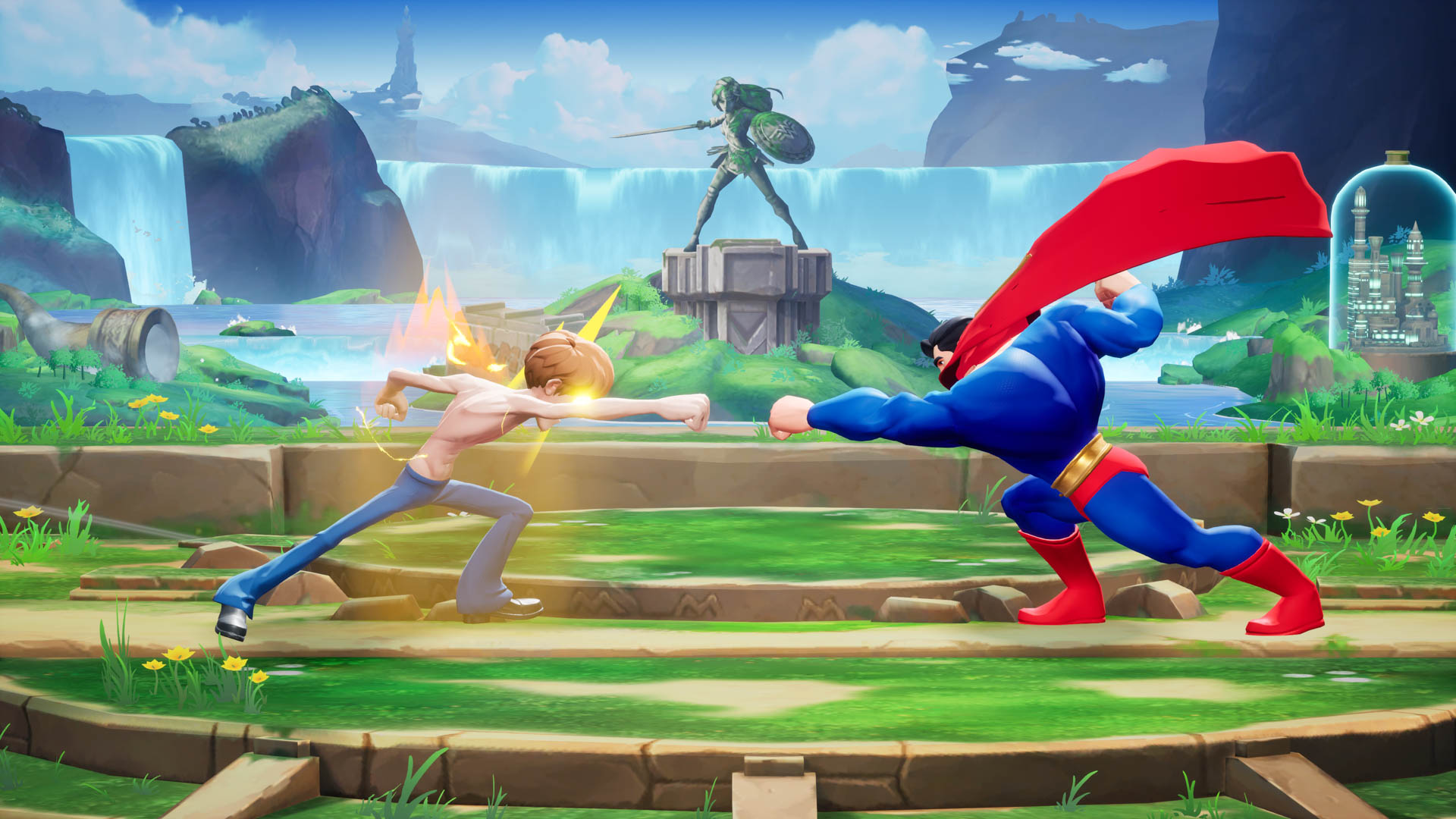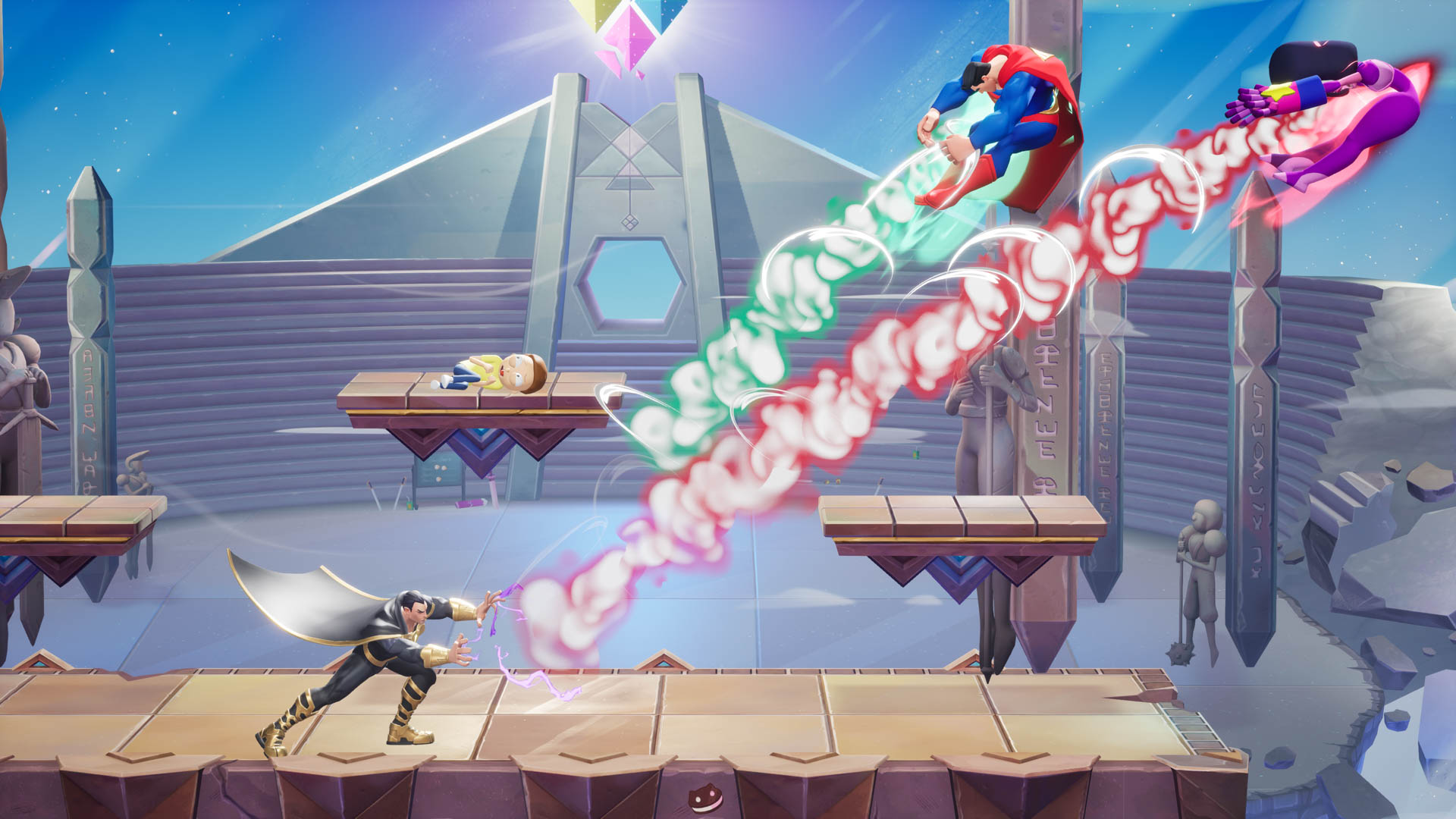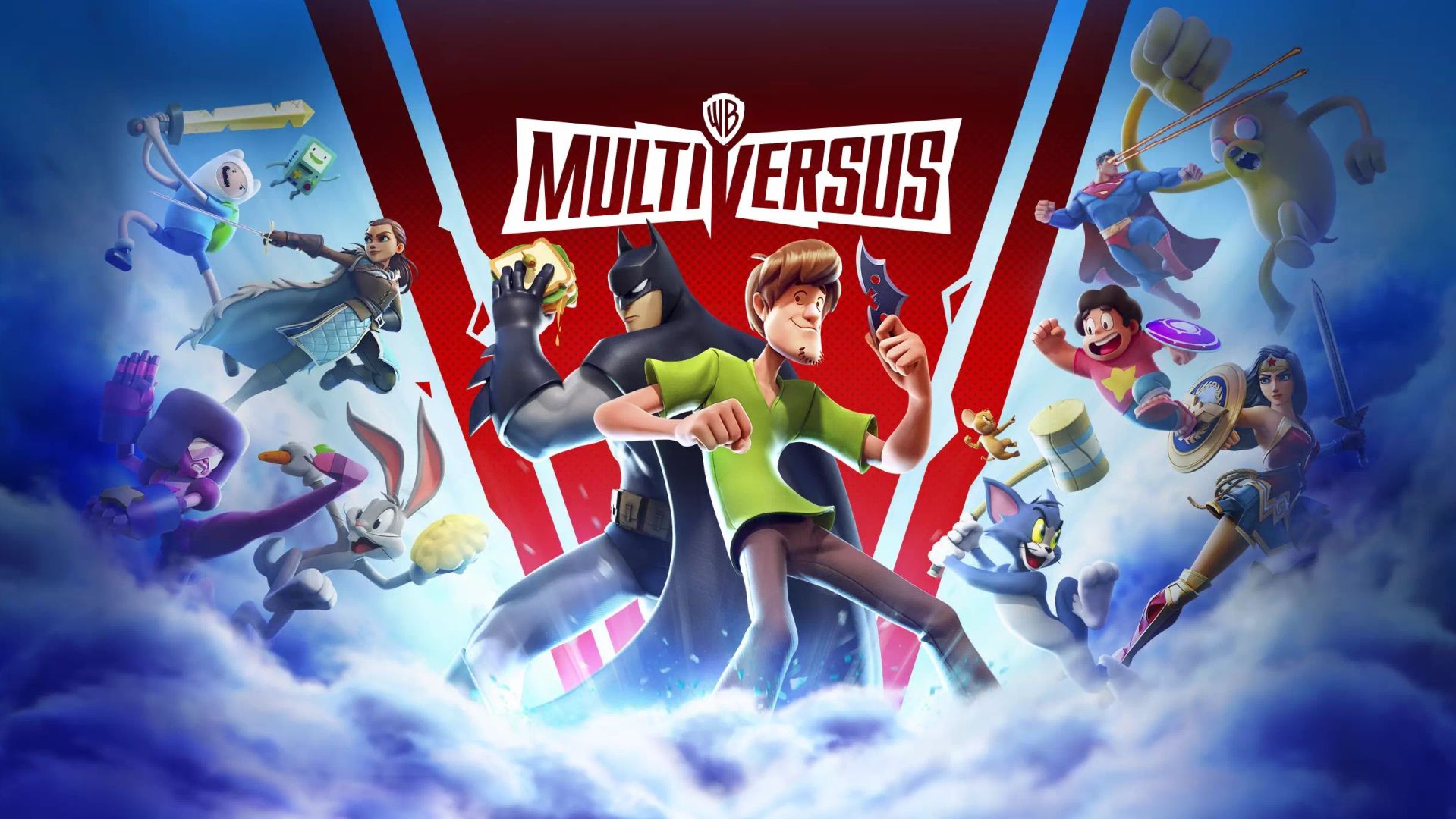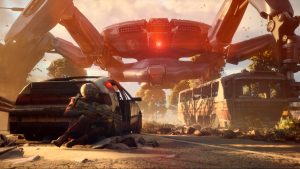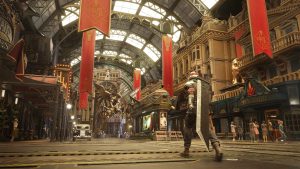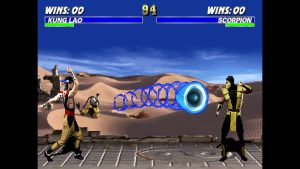
Warner Bros. properties formed a core part of my childhood growing up. The Animaniacs were omnipresent (for better or worse) and brilliant, as were Pinky and the Brain. Gremlins was as traumatizing as it was fascinating. Everyone knows the classics like Looney Tunes, Scooby-Doo and Tom and Jerry. While they’re roughly a decade or more old, Steven Universe and Adventure Time are still universally acclaimed and fondly remembered.
This is before we even get into the DC Universe’s Superman, Wonder Woman, Batman and the Joker, Jason Voorhees from Friday the 13th and Arya from Game of Thrones (one of the few redeeming elements when the show ended). As a result, MultiVersus has a star-studded line-up that compiles several of the most iconic characters from decades of Warner Bros. entertainment.
"Things quickly go off the rails as you face off against other characters who take the Joker’s side, who may be variants of the ones you know. It’s not explained early on, and the plain dialogue interactions with their lack of voice acting also drag the experience down."
They’re all lovingly rendered as well, right down to their character models and animations, and they all feel uniquely like the character in question – even Shaggy, for all his over-poweredness that reportedly led to the title’s creation.
After launching into open beta to great numbers, dropping in popularity after several unpopular changes and getting delisted, the crossover fighter is back. It’s a somber reunion, though, because while it’s improved in some ways, the full release of this Warner Bros.-centric platform fighter feels like a step behind its competition in almost every way.
Presentation-wise, a lot is lacking. After trouncing the relatively straightforward tutorial section, which sets up a multiversal conundrum involving Batman and a confused but still aggressive Marvin the Martian, players are tossed into the deep end of Rifts, the new PvE mode. The story, such as it is, involves the Joker and Batman trying to gather allies to halt his schemes. Or something.
Things quickly go off the rails as you face off against other characters who take the Joker’s side, who may be variants of the ones you know. It’s not explained early on, and the plain dialogue interactions with their lack of voice acting also drag the experience down.
Rifts provide some quick action, with two difficulties available at the start – Easy and Experienced. A few encounters later, you can branch into different paths to progress. Each node has objectives to complete with scaling rewards and there’s always the assurance of being able to return to any stages left behind to mop up any remaining.
"Nodes can have mutators to help spice things up, whether it’s bestowing Chicken Fists to characters, granting Infinite Jumps or reflecting damage."
On Experienced, the AI puts up a pretty reasonable fight…until you start socketing Gems. Awarded upon completing node objectives, these can provide different buffs like increased attack and defense, a percentage chance to inflict a status effect, automatic dodging and so on. When you obtain duplicates, they go into leveling the original Gem, increasing its effectiveness and your overall Gem Level. Depending on the difficulty, Gems can outright trivialize encounters.
Nodes can have mutators to help spice things up, whether it’s bestowing Chicken Fists to characters, granting Infinite Jumps or reflecting damage. They’re fine for what they offer, feeling like throwaway gimmicks instead of requiring any fundamental shift in strategy.
You also have mini-games that crop up, which thankfully do offer some varied gameplay with shooting targets, selecting face-down cards and platforming around to hit targets. Yes, they’re also pretty simple, but at least they’re significantly different from the rest of the nodes. The same goes for boss battles, which present unique mechanics to take down the Big Bad of the Rift.
Once the two available Rifts are completed, you can challenge them on higher difficulties for more rewards. The problem is leveling up your Gems, which means revisiting stages and mopping up any remaining objectives. Sounds easy enough, except you have to gamble on the preferred duplicate dropping or a higher rarity with a better passive. Some objectives also make no sense, like bringing a friend into a match, especially when there’s no matchmaking for Rifts.
"However, even if you have the cash for Gleamium and want to unlock certain characters immediately, you can’t practice them beforehand to see if they’re worthwhile."
Not that you can ignore Rifts, as they award precious Fight Currency. Or maybe you should cave and get the Premium Battle Pass since it awards Jason Vorhees, one of the strongest characters currently. The Fight Currency doled out is surprisingly meager, and since many characters require 3,000 Fighter Currency (or 250 Gleamium, acquired with real money), a significant portion of the roster is locked off. Perhaps the only thing worse is that some fighters cost 6,000 Fighter Currency instead.
Shaggy is available as a permanent roster member, with four others rotating, so you do have some choices. However, even if you have the cash for Gleamium and want to unlock certain characters immediately, you can’t practice them beforehand to see if they’re worthwhile. At least there’s a Training Mode tucked away in the same menu where you access online modes, allowing you to practice against bots and set their behavior. Unfortunately, more complex features like frame data, Combo Trials and replays aren’t available.
As for online play, there are 1v1 and 2v2 modes with no Free-For-All (again, available in Local and Custom Games) or Ranked playlists available. Netcode was mostly fine while playing, and wait times were relatively short. When you get down to the gameplay and compete against other players, MultiVersus does shine in several ways.
Discovering each player’s kit, from Wonder Woman’s armor and lasso throws to Bugs Bunny’s use of gimmicks, can be enjoyable. The first player to knock their opponent out of stage bounds wins. Finding a capable opponent and trying to out-maneuver them or finding opportunities for parrying or sending them off the stage can be fun.
"You don’t get XP from matches, slowing the progression of each character to a crawl. Earning Perk Points to unlock new Perks is also super-slow, so if you’re not a returning player, be prepared to grind."
However, there are some significant problems here as well. Fighters can feel sluggish at times, and there’s a frame buffer for inputs, which leads to frustration, like when attempting to jump Up Normal, only for a character to remain on the ground for the same. I’m also not the biggest fan of the camera and how it starts so closely zoomed in.
It does zoom out as you gain some distance from your opponent, but overall, it feels odd. The same goes for the new character highlighting. Highlighted characters for better visibility during fights? Great, but this ugly glowing sheen is just not doing it. Also, the lack of end-screen stats or an option to change your character during a rematch is a baffling oversight.
Of course, there are fundamental issues with the progression outside the Fight Currency earned from Rift Nodes. Completing dailies and quests nets XP and other currencies, but that’s the only way to level characters. You don’t get XP from matches, slowing the progression of each character to a crawl. Earning Perk Points to unlock new Perks is also super-slow, so if you’re not a returning player, be prepared to grind.
It’s the most egregious mobile-like design that encourages logging on for some time and coming back the next, purely serving to prop up the daily active user count. Fun fact: One of the new “events” requires leveling up characters to attain rewards like Fighter Currency and whatnot, which must be a joke, given the current progression.
MultiVersus has the potential to become something great. Then again, plenty of players were saying the same when the open beta first launched. The gameplay is solid, though it teeters between “simple yet deep” and repetitive, regardless of the perk combos. It warrants a try, but those seeking something more may want to return when Ranked Play, additional Rifts and difficulties, and other improvements arrive to bring it up to line with the more superior fighters.
This game was reviewed on PS5.
Fundamental gameplay is enjoyable, especially with the new mechanics. Characters are lovingly rendered and represented well. Solid level design overall, with some exceptions. Netcode is also good, with no lag.
No Ranked mode. No practicing characters before purchasing them. No online Free-For-All. No stats, character change or rematch option after matches. Rifts feels unbalanced at times and lacks much compelling story content. Grind to unlock new characters and Perk Points is as annoying as the input buffer and camera.









